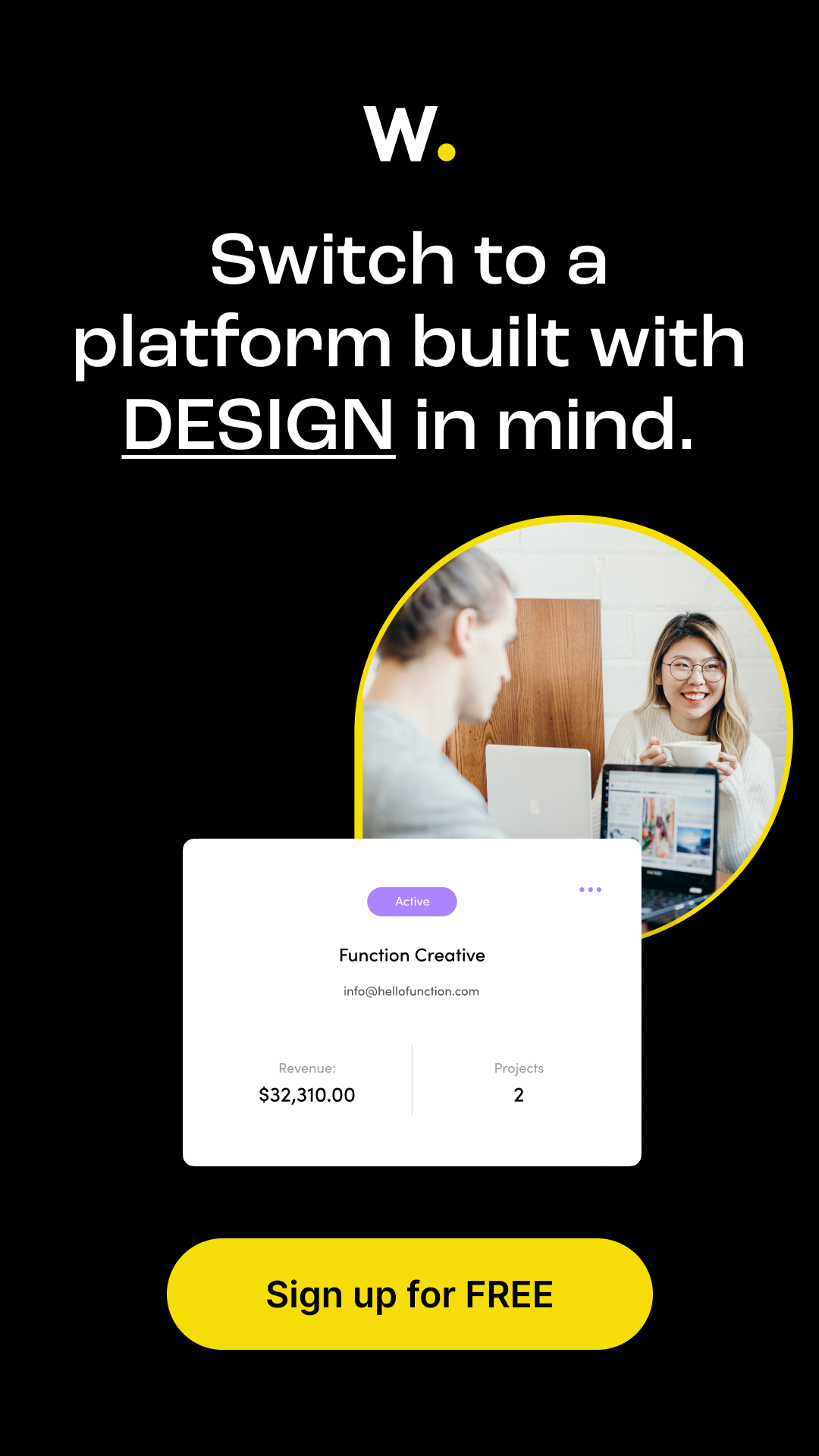How to Collect Design Project Feedback Using WillowSpace Forms
One of the most important steps in a design project is collecting feedback on all aspects of your design process - the onboarding, the design itself, the client communication...etc. It all plays a part in making your time with your client incredibly successful.
Collecting feedback in a design project can be incredibly intimidating - both for you and your client. It’s critical to guide this process so it stays on track and meaningful. So, how should you go about asking for feedback without derailing a project - and how can you get feedback you can actually use? Let’s take a look.
Our 8 Key Steps to Collecting Project Feedback
📋 Start with a strong strategy
Be sure to have a project goal, or business strategy defined to back all of the designs or deliverables you're presenting for feedback. Without a strategic foundation, there's nothing to fall back on, there’s no definition of what makes a project successful, and there’s no way to give rationale for your design decisions.
💡 Give reasoning as to how the design solves your client’s problem at hand
Share the thought process behind how you've made the decisions you've made throughout the whole design process. This will help your client understand how your work relates to their project scope, and how it will help them achieve their goals.
At Function (our design studio), we always present our designs live to the client on a video call so they have full insight to our process and decisions, or we will record a presentation and send it to them with a feedback form.
📃 Be clear about the type of feedback you’re seeking
Be sure to let the client know you are looking for feedback pertaining to the goal/ideal audience/strategy and to avoid subjective opinions or open-ended questions like “what do you think of this?”
Instead, ask for feedback in intentional, guided steps. Think of structured questions to ask like “how will your ideal customer react to these photos?” or “on a scale of 1-10, how do you think this meets the goal of this project?”
This makes the feedback more valuable to you, and your client.
🖊️ Give them a process
Be clear on how you want them to send feedback to you. For example, do you want them to start from top of page and work their way down to the bottom? Do you prefer if they break down project parts into smaller chunks? Want them to send you a Google Doc of all the copy changes on a website?
Be explicit with your instructions and expectations here. Map out the process and give examples so your clients know the best ways to provide their feedback. This will also help them stick to timelines. An overwhelmed client usually = a delayed response.
⚒️ Use the right tools to guide the feedback
Sending an open-ended invitation for feedback in an email isn’t always the best approach. In fact it can be overwhelming for clients to know where to begin. Not the best client experience if you ask us!
Use tools to help you guide this feedback process with your clients. WillowSpace has templates for feedback forms, asking specific questions like, "how do you think your target market will react to XYZ colors?" or, "on a scale from 1 to 10, how well do you think this captures the goal of XYZ?"
Using something like WillowSpace to set up a form to send to your client along with clear instructions and a design proof keeps everything in one spot. Add a due date to your form and now your client has everything they need for a successful feedback round!
🖇 Limit the options you give to clients
When it comes to design, typically less is more. Ever heard of decision paralysis? It happens when you show someone too many options, overwhelming their decision-making abilities.
Don't show your clients too many visual options and then expect clear, valuable feedback. Show polished, finished, working concepts whenever possible. This helps the client to be less overwhelmed when providing feedback and gives them one thing to focus on at a time. It also cuts back on the “frankenstein design” - when a client wants a little of option A mixed with a little of option B and a sprinkle of option C, please.
⌨️ Be clear, not vague
Don't ask subjective questions like, "what do you think?" or “is there anything we should change?”
Instead ask clear, guided questions like:
How could this design be improved for your target audience?
What could make this logo stronger for your ideal customer?
How is this design different from your competitors?
How do you think your ideal client will react to these colors?
😄 Stay open minded
Actively listen and follow up with clear and structured questions to keep the project on track. It’s important that we consider all aspects of a project as a designer, and so be sure that you also keep an open mind when collecting feedback from clients.
Critical feedback can be difficult to hear but is a necessary step to ensuring a very successful project and client experience. And what do we know happens when clients have the easiest time working with you? Say it with me: MORE CLIENT REFERRALS! 🎉
Did you know WillowSpace has form templates for collecting project feedback already set up for you?
We know that coming up with clear, valuable questions can be tough. And that’s why in WillowSpace we’ve built form templates to make this process so much simpler. We’re making this process seamless so you can get back to doing what you do best, and be set up for client success in just minutes!






